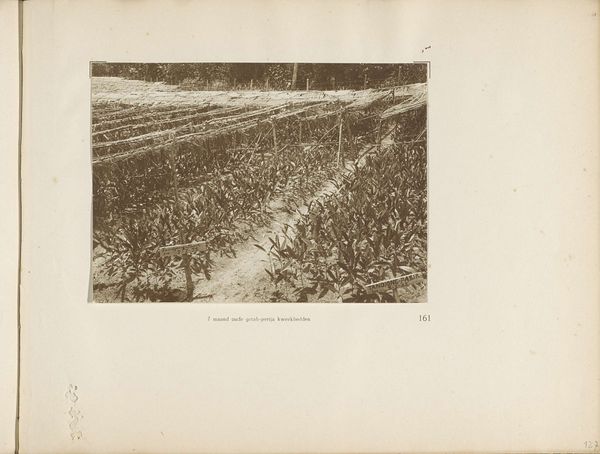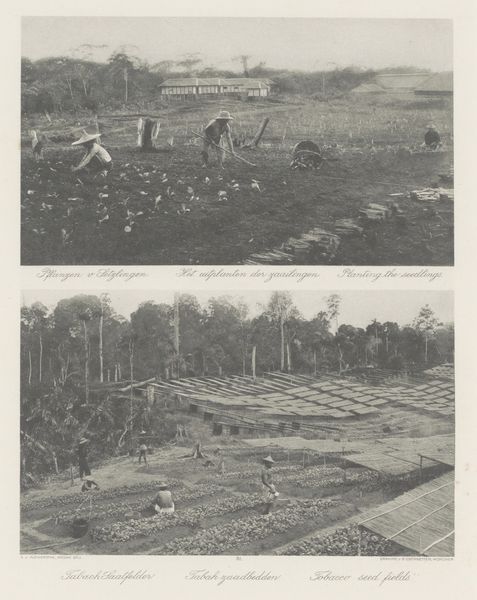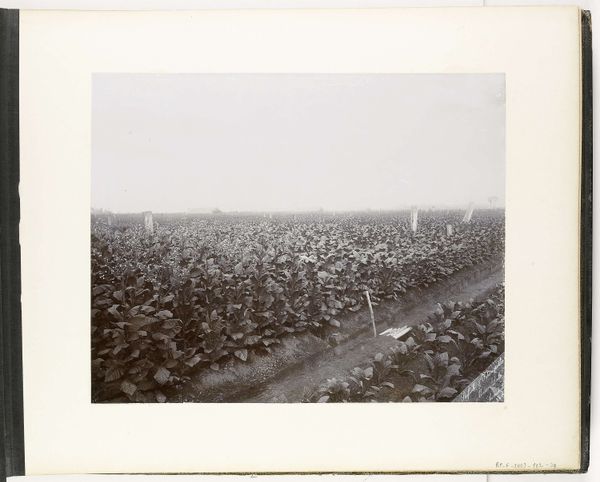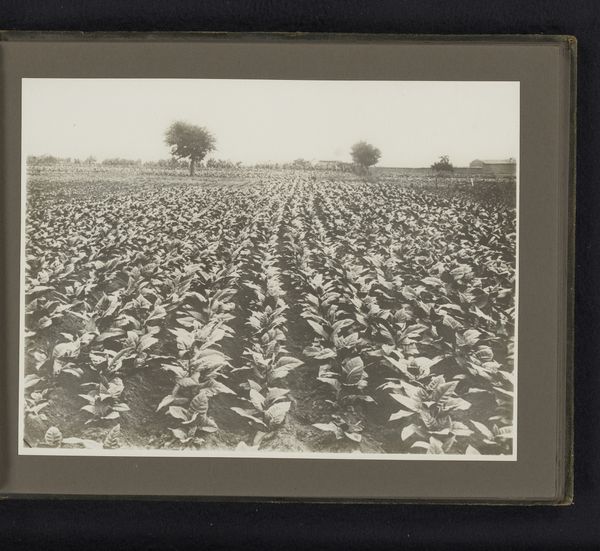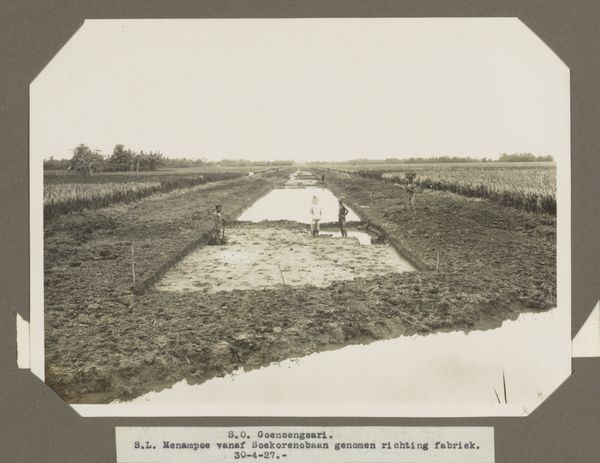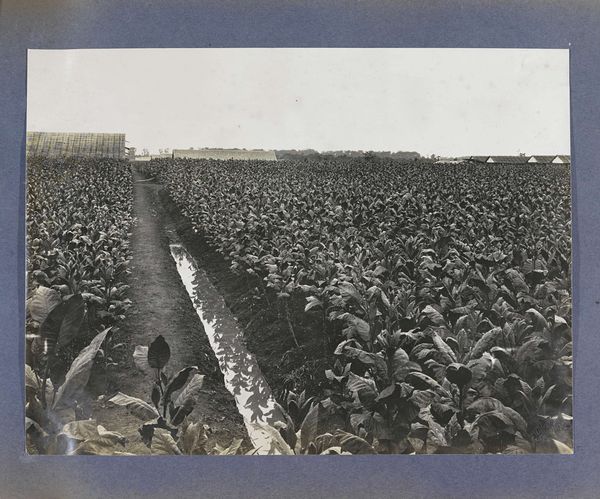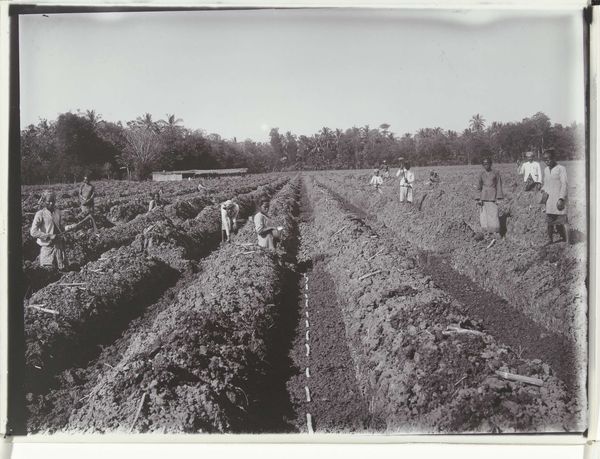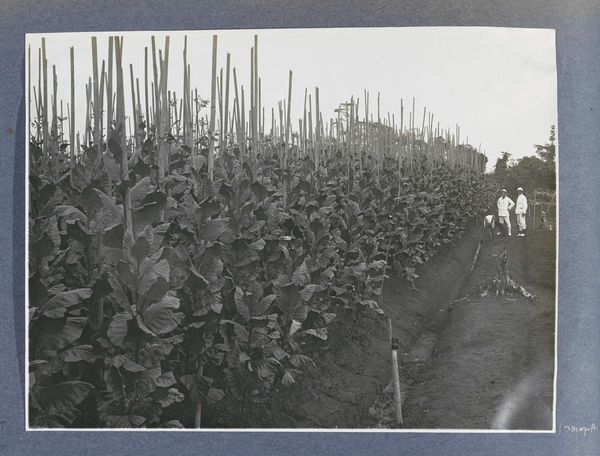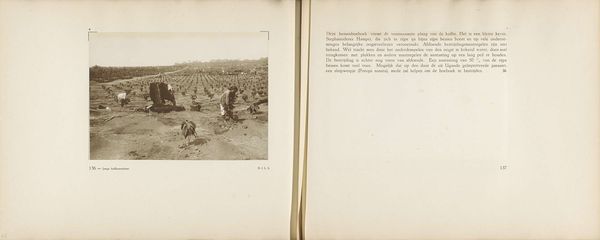
Aanhogen van tabaksaanplant (boven) en veld met rijpe tabak en zaadbomen (onder) op plantage op Sumatra before 1898
0:00
0:00
print, photography
# print
#
landscape
#
photography
#
orientalism
Dimensions: height 126 mm, width 218 mm, height 134 mm, width 218 mm
Copyright: Rijks Museum: Open Domain
Editor: Here we have "Aanhogen van tabaksaanplant (boven) en veld met rijpe tabak en zaadbomen (onder) op plantage op Sumatra," a photographic print by Carl J. Kleingrothe, created before 1898. It strikes me as a rather formal documentation of agricultural processes. The composition is split into two distinct fields, creating a strong visual contrast between the cultivation stages. What do you make of the arrangement of these scenes? Curator: Indeed, the diptychal structure allows for a fascinating formal reading. Note the geometric precision with which Kleingrothe arranges the tobacco plants and drainage systems. It transcends mere documentation. Observe how the strong horizontals, bisecting the frame, create a structured, almost abstract division of space. This echoes, perhaps unintentionally, the compartmentalization inherent in colonial agricultural practices. Editor: So, you're suggesting that the structure itself conveys meaning, beyond the literal depiction of tobacco farming? Curator: Precisely. Consider the texture, created by the meticulous arrangement of leaves. The contrasting light and shadow lend depth to the two halves. Semiotically, the ordered fields evoke a sense of control, of imposing a European gaze upon the landscape. But I wonder, does that order really mask a latent unease, revealed by the very flatness of the plane? Editor: That's fascinating. I hadn't considered the potential subversion hidden within the seemingly straightforward composition. Curator: Form and content are always entwined. This piece highlights the complexity of seeing an image through a focused, yet always questioning lens. Close looking reveals subtle yet rich textures that help give new perspectives to existing beliefs about an artwork.
Comments
No comments
Be the first to comment and join the conversation on the ultimate creative platform.

